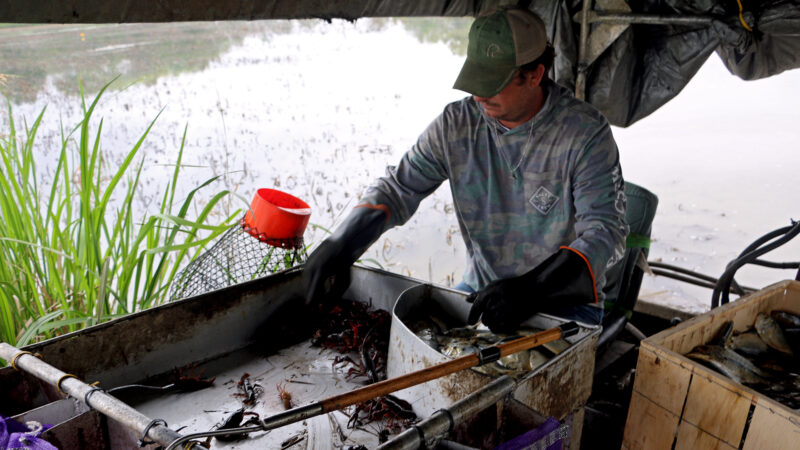INTERVIEW: James Willig On The “Gamification” Of Medical Education
 Birmingham — Medical education is always evolving. One way it’s changed in recent years is that residents are not allowed to work the long, judgment-impairing shifts they used to. Most agree that’s good. But how do you make up for all that lost teaching time? Some UAB researchers think they have an answer: video games. They created a competitive educational game called “Kaizen-Internal Medicine,” or just “Kaizen-IM,” and a small but promising study showed that busy young doctors learned from it in their off hours. UAB’s James Willig sat down with WBHM’s education reporter Dan Carsen to explain. Willig starts with the downside of limiting residents’ work hours. The on-air version is above, with an extended web-only version below:
Birmingham — Medical education is always evolving. One way it’s changed in recent years is that residents are not allowed to work the long, judgment-impairing shifts they used to. Most agree that’s good. But how do you make up for all that lost teaching time? Some UAB researchers think they have an answer: video games. They created a competitive educational game called “Kaizen-Internal Medicine,” or just “Kaizen-IM,” and a small but promising study showed that busy young doctors learned from it in their off hours. UAB’s James Willig sat down with WBHM’s education reporter Dan Carsen to explain. Willig starts with the downside of limiting residents’ work hours. The on-air version is above, with an extended web-only version below:
0:00 — Carsen asks Willig about his background and how he got involved with this novel approach to medical education.
0:33 — Carsen asks Willig to relay the basics of the study he and his colleagues put together.
1:36 — Willig details tradeoffs between protecting medical trainees (and patients) from sleep deprivation versus losing learning time.
1:53 — Willig talks about why the group got together.
2:14 — The infamous “stack of tomorrows”…
2:45 — Carsen checks his own understanding of the tradeoffs associated with limiting medical trainee work hours. Willig elaborates and adds, “something had to give….”
5:20 — Doctors tend to be competitive, which is good for the purposes of the study.
5:58 — Carsen asks about how the video game works.
6:10 — Willig explains how they came up with the game’s questions.
7:10 — The game is streamlined enough to play on a quick elevator ride.
7:50 — Willig describes how one plays the game.
8:20 — Rewarding not just knowledge but consistent participation…
8:50 — From nothing, to petri dish, to crutches, to the all-powerful Coffee Lord…
9:25 — Carsen asks who designed the game.
9:35 — UAB’s CTSA (Clinical and Translational Science Awards).
10:10 — Artistry helped.
10:34 — Carsen asks about the paper Willig and the group have submitted.
11:00 — Carsen asks about other research on this potentially revolutionary approach to general (as opposed to surgical) medical education. Willig talks about what he thinks makes the study unique.
11:55 — Making the game a part of the culture of residency programs…
12:25 — Carsen asks if this new approach, like 3-D printing prosthetics, is the result of a serendipitous convergence of new technologies — an idea whose time has come. Willig shares his thoughts.
12:55 — Willig points out that today’s med students are millennials who learn differently from other generations. He says the game can “meet them where they are.”
14:30 — Who’s the old man now? “I know they’re on Facebook….”
14:50 — A chance to turn a distraction into an asset.
15:00 — Carsen asks about the name of the game, “Kaizen-Internal Medicine,” or just “Kaizen-IM.”
15:25 — Every health professional can help improve health care.
15:50 — Lessons to last a lifetime…
Alabama’s racial, ethnic health disparities are ‘more severe’ than other states, report says
Data from the Commonwealth Fund show that the quality of care people receive and their health outcomes worsened because of the COVID-19 pandemic.
What’s your favorite thing about Alabama?
That's the question we put to those at our recent News and Brews community pop-ups at Hop City and Saturn in Birmingham.
Q&A: A former New Orleans police chief says it’s time the U.S. changes its marijuana policy
Ronal Serpas is one of 32 law enforcement leaders who signed a letter sent to President Biden in support of moving marijuana to a Schedule III drug.
How food stamps could play a key role in fixing Jackson’s broken water system
JXN Water's affordability plan aims to raise much-needed revenue while offering discounts to customers in need, but it is currently tied up in court.
Alabama mine cited for federal safety violations since home explosion led to grandfather’s death, grandson’s injuries
Following a home explosion that killed one and critically injured another, residents want to know more about the mine under their community. So far, their questions have largely gone unanswered.
Crawfish prices are finally dropping, but farmers and fishers are still struggling
Last year’s devastating drought in Louisiana killed off large crops of crawfish, leading to a tough season for farmers, fishers and seafood lovers.








